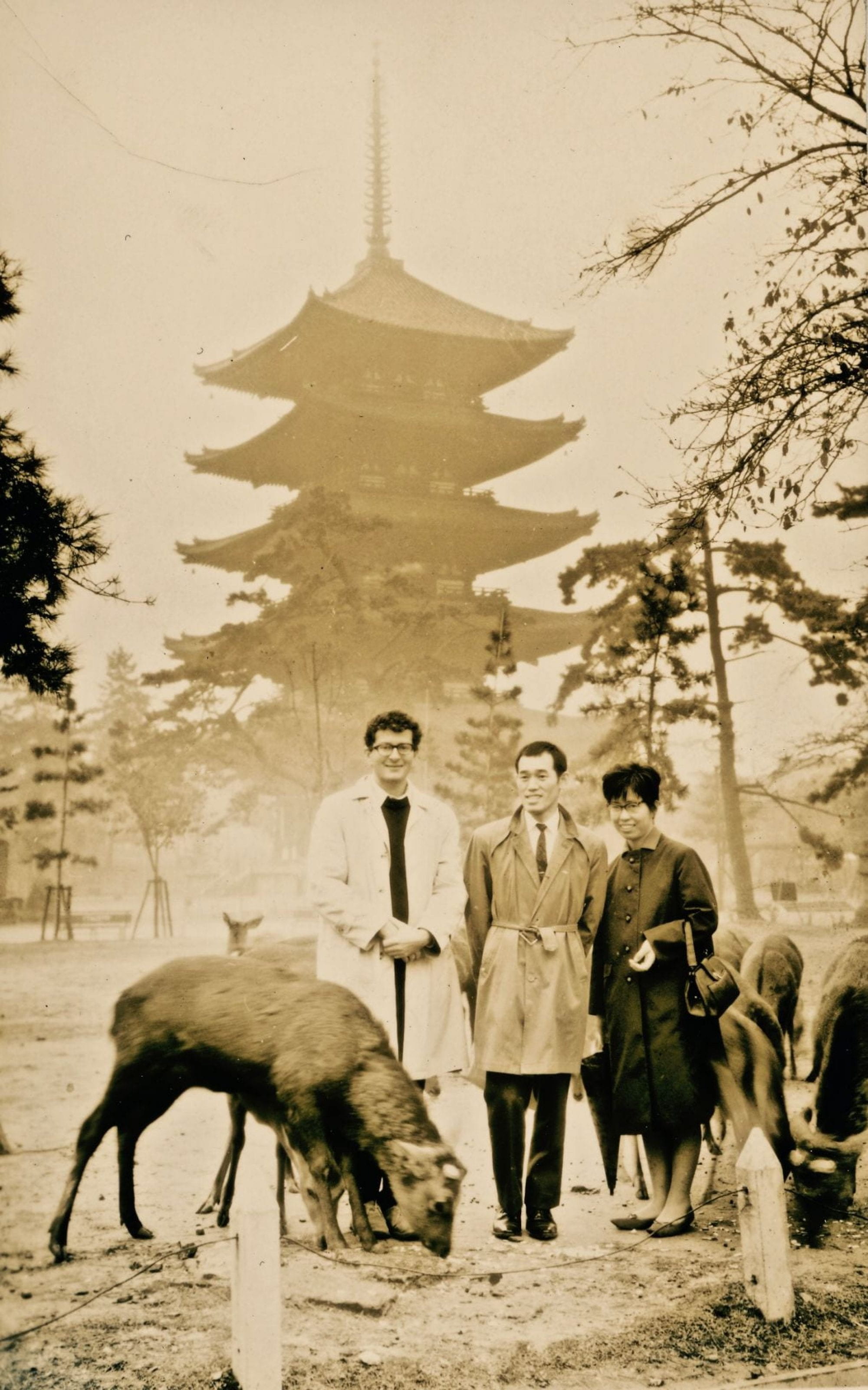Utagawa Kunisada 歌川国貞 (1786-1865), and Totoya Hokkei 魚屋北渓 (1780-1850)
Santō Kyōzan 山東京山 (1769-1858), author
Natsu no Fuji 夏の富士
Volumes 1-2
Publishers: Tsuruya Kiemon, Yamamoto Heikichi, Nishimuraya Yohachi, Izumiya Ichibē and Moriya Jihē, Edo
Edo period (1603-1868), 1827
Woodblock printed book; ink and color on paper
22 x 15.8 cm
The title of this book, Natsu no Fuji, is a pun on the notion that actors’ faces without white makeup resemble the snowless peak in warm months. This metaphor was used for the first time in Katsukawa Shunshō’s book of a similar title published in 1780; there, Shunshō depicted kabuki actors offstage pursuing a variety of activities at home, going on boat rides, and strolling the streets of the city. Kunisada illustrated this new version of Natsu no Fuji in the late 1820s, almost fifty years later.

This opening shows famous actors of Kunisada’s time enjoying the cool evening breeze on the Kamo River in Kyoto. Ichikawa Momotarō (Danzō VI, 1800-1871) is depicted standing in the water emptying his pipe, while Seki Sanjūrō II (1786-1839) leans to greet the female entertainer. Bandō Minosuke II (Mitsugorō IV, 1802-1863) and Sawamura Gennosuke II (Sōjūrō V, 1802-1853) are shown looking on from behind. The figure on the left with a sake cup is Nakamura Karoku I (1779-1859), a renowned Osaka actor specializing in female roles (onnagata). Since women were prohibited from performing in theater, their roles were played by men, and these actors can be easily identified by their purple headscarves covering the shaved portion of the adult male hairstyle.
Kabuki was one of the most popular forms of entertainment in the early modern period and its actors were akin to contemporary celebrities. Fans were ready to pay to read stories about their idols and get a glimpse into their private lives. In a commercially driven ukiyo-e world, publishers were eager to supply them with books like Natsu no Fuji. Kunisada was a fitting choice as a designer since he had a close relationship with many of the actors and, like Toyokuni before him, was also famed among his contemporaries for actor likenesses (nigao).
Maria Puzyreva
Selected Readings:
Izzard, Sebastian, J. Thomas Rimer, and John T. Carpenter. Kunisada’s World. New York: Japan Society of America, 1993.
Tinios, Ellis. “Greater than Utamaro: The Fame of Utagawa Kunisada.” Ukiyo-e geijutsu 171 (2016): 95–113.
———. Mirror of the Stage: The Actor Prints of Kunisada. Leeds: University Gallery Leeds, 1996.

